Lifting a 12-tonne tank with a plastic 3D printed part
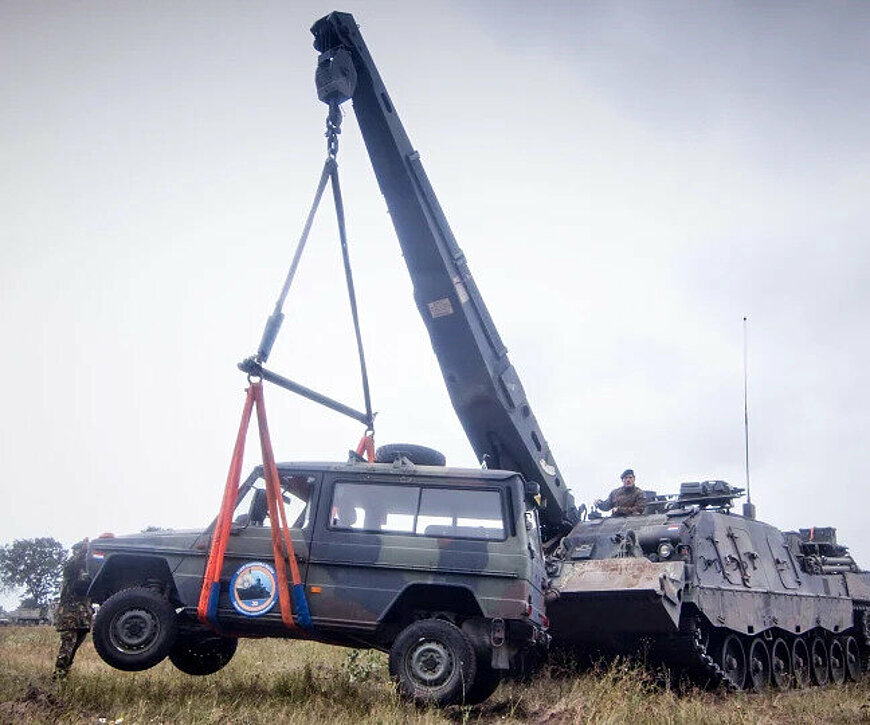
"How strong are 3D printed parts?"
That’s the question most engineers ask when they consider 3D printing. After all, it’s crucial to know what’s possible with the tools at your disposal. It was also this question that engineers from Ultimaker, Covestro, and the Royal Dutch Navy came together to find out. But not in a conventional way...
The conventional way to measure a material’s strength is by using a tensile testing machine. A small sample is printed and put under a large force until it snaps. The force projected on the part divided by the surface of the center intersection at the time of breaking will express its strength.
While these numbers mean a lot to engineers, sometimes “seeing is believing”. To really render an image in the minds of people on how strong 3D printed parts can be, Covestro, the Dutch Royal Navy, and Ultimaker started a unique collaboration to lift something seriously heavy.
But what would work? Gym weights? A motorbike? A car? Perhaps a large jeep? And then the Dutch Royal Navy asked:
''Why not an armored vehicle?''
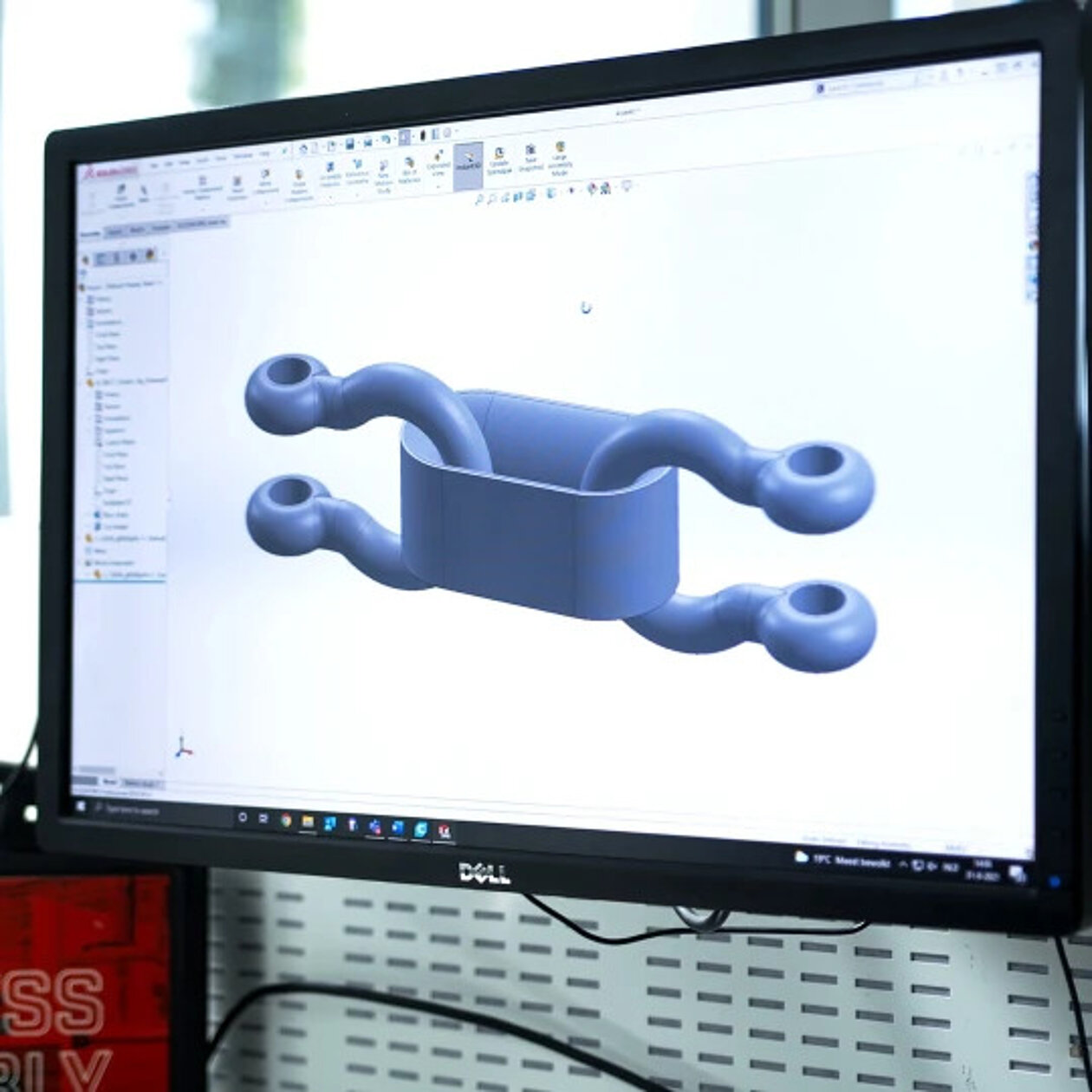
Creating the initial design
To lift a heavy vehicle using a 3D printed part, first we needed to analyze the hardware we could use.
The Royal Dutch Navy had a special lifting tank at its disposal which used two openable steel rings to connect to their crane, and to the cables attached to the to be lifted vehicle. An elongated O-shaped link would be able to connect these two metal rings and lift the heavy vehicle.
After importing the geometry of the steel rings into CAD software, Ultimaker Application Engineer, Lars de Jongh was able to create the initial design for the link. Lars first defined the design requirements:
- The link needed to have a flat side for a stable 3D print
- The link needed to be printed with the layer lines in the same direction as the forces projected on the part
- The printed part and metal rings’ interacting surface should be as large as possible to spread forces evenly
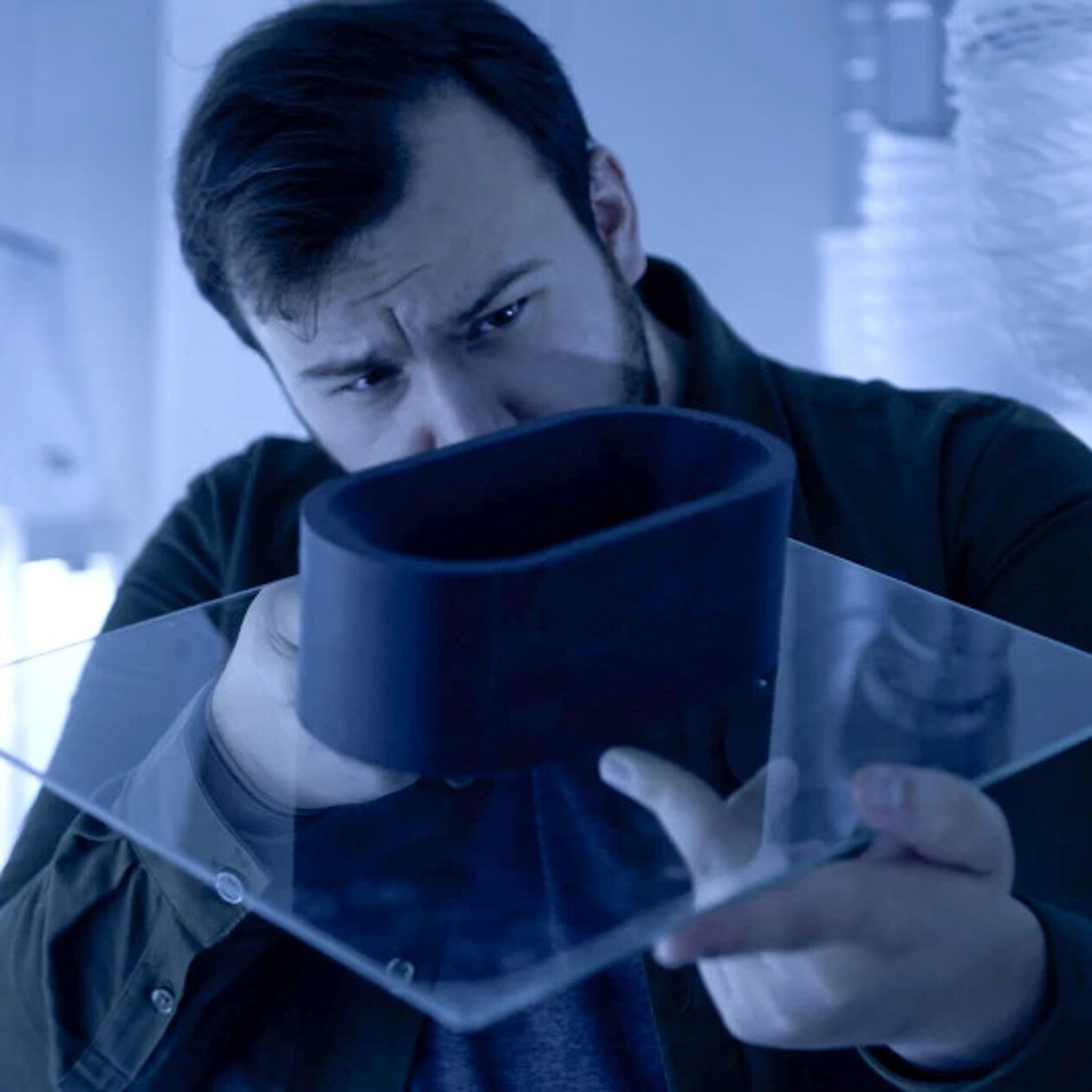
Finding the right material
The Ultimaker Marketplace is filled with hundreds of materials. Each of them has a unique combination of properties, which makes it very likely your part will match the set requirements. The material needed for this test needed to be extremely strong, but also needed to be able to absorb short peak forces. Addigy® F1030 CF10 from Covestro matched the set requirements. This nylon-based polymer is loaded with carbon fiber and can be printed using the Ultimaker S5 and CC print core.
Optimizing the design using simulations
It takes less time to 3D print a solid, 2-kilogram link than producing it with traditional methods. However, the number of iterations necessary to validate the right geometry meant that time was still a factor. That’s why the design was optimized before printing using computer simulations.
Covestro digitally applied the forces on the design using software that knows the exact physical properties of their carbon fiber nylon material. By running simulations, we were able to identify where the design needed to be adjusted and where material could be removed. This created an optimized design which could lift more weight, while needing less material, resulting in a faster production time with less cost.
Verifying the simulation
Before we were able to lift our heavy vehicle, we needed to verify the printed part’s calculated strength physically. Two designs were generated for two sizes. The first was a 1-kilogram link which we estimated could withstand 12 tonnes. The second weighing roughly 2 kilograms was estimated to be able to withstand 38 tonnes. The Royal Dutch Navy has an on-site industrial tensile tester which is able to project up to 343 kilonewtons of force on an object. Both the initial and optimized versions were tested for the large and small version.
The optimized design was able to withstand a higher force, while weighing a third less. The difference between the tested results and the simulated numbers was also extremely close, being only 1% off on average. This made this workflow accurate and profitable in time-to-market and increased performance.
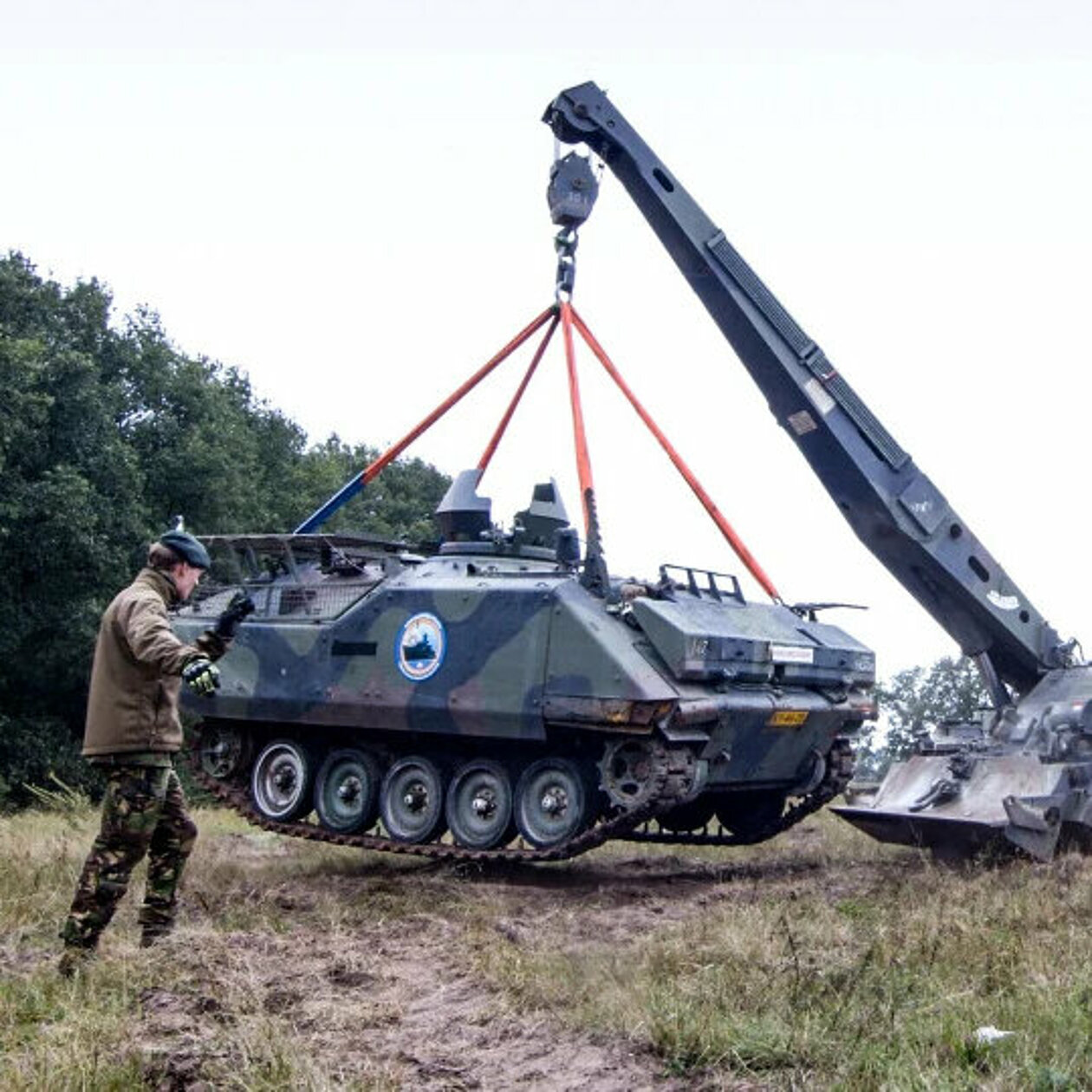
Lifting two vehicles
After several months of designing, printing, testing, and planning – it was time for action! Two links were about to lift an actual military heavy vehicle. On a Dutch Army base in the south of the Netherlands, the 13th Light Rhino Brigade assisted us with their armored recovery vehicle. Their Leopard 2 “Buffalo” has a crane mounted on the front and is designed to recover heavy vehicles such as trucks and battle tanks.
As a warm-up, the 1-kilo link was used to lift a military version of a Mercedes jeep weighing over 2 tonnes. This was not a problem at all: the vehicle was easily lifted up. Then, it was time for something bigger.
The 2-kilo solid carbon fiber reinforced nylon link was placed between the M113 armored vehicle and the Buffalo crane. The metal rings were tightened in place and four cables were attached from the lower hook to the vehicle. The crane slowly started to move up, putting the cables and 3D printed part under tension. Then, the 12-tonne vehicle slowly rose up, hovering above the ground, hanging from a 3D printed link! The Buffalo drove around, backward, forward, turning around, but the link held up perfectly. The collaboration produced a very successful result.
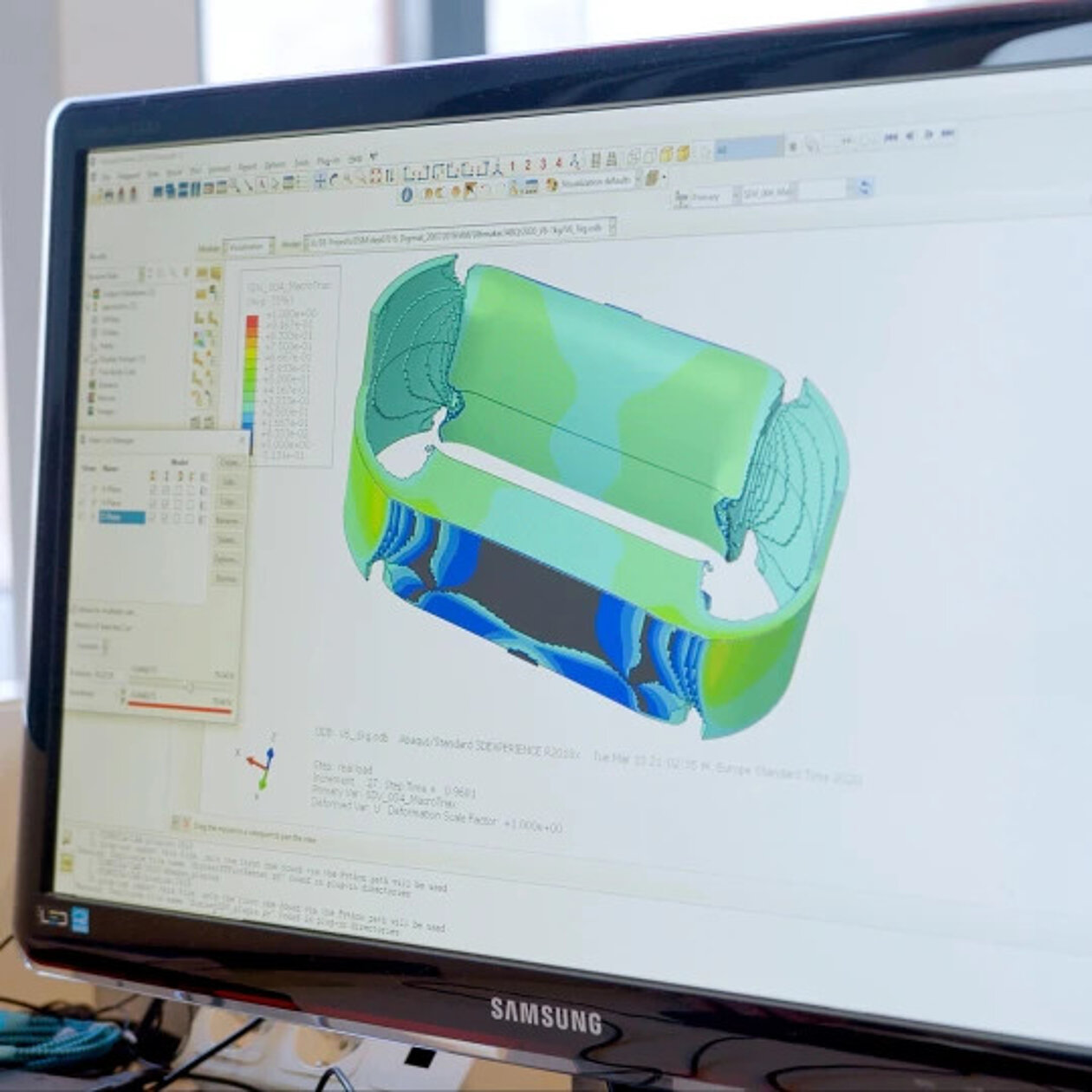
Learnings and key takeaways
The project wasn’t just a success because of the working link. We also learned a lot along the way.
It was amazing to see that CAD simulations have come a long way, not just simulating a shape, but giving accurate predictions taking material and even fiber direction in account. Being able to rely on such tools is a major benefit for engineers.
While all parts were printed in properly maintained rooms and the materials were not exposed to moisture, there was still a noticeable difference between versions printed in a dry warehouse, and parts printed with deliberately dried spools of filament in a heated, dry print room. Nylon absorbs moisture and this can result in weaker prints. That’s why it’s very important to know materials’ properties and handle them accordingly.
Seeing is believing
A technical data sheet will tell you a material’s strength in abstract numbers. But when you see what can be achieved with strong and optimized 3D printed parts, it’s easier to understand the possibilities of additive technology and get inspired for new and exciting applications.
